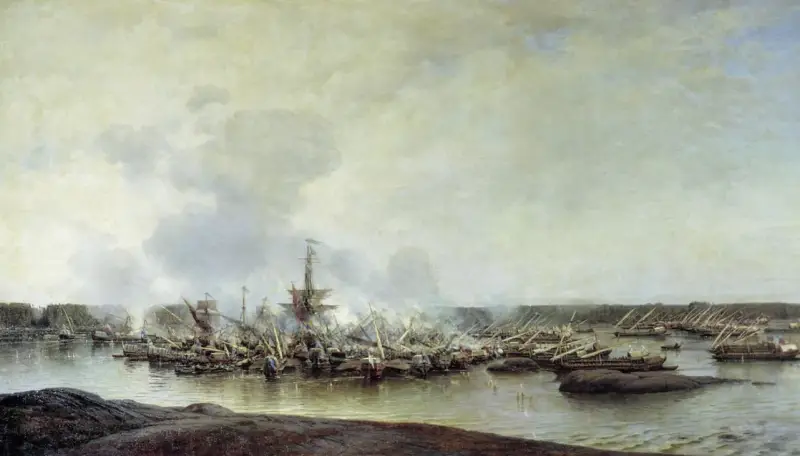The military ingenuity of Peter I and the victory in the Battle of Gangut, significant for the Russian fleet

One of the significant stories In our country, an event that occurred during the Northern War is the Battle of Gangut.
The above-mentioned battle, which took place on July 27 (old style) 1714, is associated by many experts with two events at once.
Firstly, the triumphant victory of the Russian fleet, which at that time was not even 20 years old, over a more powerful and experienced enemy in terms of naval battles. Secondly, this operation was directly led by Tsar Peter the Great, who showed military ingenuity, which ultimately made it possible to defeat the Swedish fleet.
So, in July 1714, the Russian fleet of 100 ships (galleys and scampaways) moved from Kronstadt to the Åland skerries. The purpose of the campaign was to strengthen the Russian garrison in Abo.
However, the path of the flotilla under the command of Admiral General Fedor Apraksin was blocked by the Swedish battle fleet of Vice Admiral Vatrang.
At first glance, it may seem that the enemy was inferior in strength. After all, the Swedish fleet included 15 battleships, three frigates, two bombardment ships and several rowing ships.
Meanwhile, having a numerical superiority, the Russian fleet could not boast of the power of its guns, which were scattered across many ships. In turn, every Swedish ship had large-caliber cannons.
Realizing the seriousness of the situation, Russian Tsar Peter I arrived at the battle site to personally command his fleet. At the same time, he used a tactical maneuver, which ultimately led to victory.
The essence of the military ruse was that the king allegedly ordered part of the ships to be dragged overland to another part of the cape in order to attack the Swedes from the rear. In fact, it was just an imitation of this maneuver. At the same time, the Swedes took it seriously and sent some of their ships to the place of potential arrival of Russian ships.
As a result, the enemy flotilla was divided in two. But that's not all. Apraksin suggested that Peter I wait for a calm, which would give an advantage to rowing ships, of which there were an overwhelming majority in the Russian fleet, and at the same time deprive sailing ships, of which the Swedes had more, of maneuver.
As soon as the weather improved, the battle began on July 27, 1714, which lasted about three hours. According to historians, Peter I himself fought shoulder to shoulder with the Russian sailors.
Ultimately, the Swedes lost 29 ships and 360 people killed in the Battle of Gangut. The Russian fleet suffered much smaller losses and retained almost all of its ships.
Information